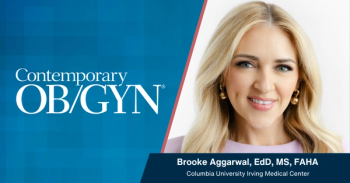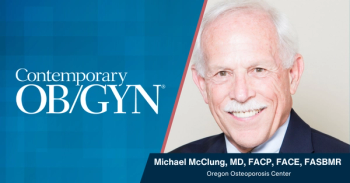
Safe at home? Probably not
In short, available evidence suggests that home births are a calculated gamble that nothing will go wrong, but they occasionally sacrifice safety for aesthetics.
As obstetricians, we share with our patients many joyous moments, but it is often the tragedies that linger in our memories. Over the past decade, two births come to mind that were indeed tragic and, in my opinion, needlessly so. In the first, a young couple experienced what had seemed a normal labor, only to be shocked when their child was born without pulse or respiration. Attempts at resuscitation by their "provider" proved futile. In the other case, the expectant parents had meticulously planned for the birth of their child, and were overjoyed at the prospect of parenthood. Labor progressed somewhat slowly, and ultimately was complicated by a difficult shoulder dystocia. Unfortunately, the "provider" was by herself and had no help to execute the appropriate maneuvers to free the impacted shoulder. Although the baby was born alive, a subsequent neurologic exam revealed a profound hypoxic brain injury, and care was ultimately withdrawn.
What do these deliveries have in common besides their terrible outcomes? Both were planned home births, the former attended by a lay midwife, the latter by a certified nurse-midwife specializing in home births.
Safe birth: A century of triumph
Philosophically, midwives and physicians are aligned in their desire for healthy outcomes for mothers and babies and to accommodate a woman's individual birth plan where practicable and safe. However, we can differ in our approaches to achieve these goals. Historically, these differences have been most fractious over the issue of home birth. The American College of Obstetricians and Gynecologists (ACOG) previously had expressed clear, long-standing opposition to the practice. As recently as 2007 it argued that monitoring in a hospital or birthing center was essential because complications arise without warning.2 However, this year, in Committee Opinion No. 476, ACOG took a more nuanced approach:
Although the Committee on Obstetric Practice believes that hospitals and birthing centers are the safest setting for birth, it respects the right of a woman to make a medically informed decision about delivery. Women inquiring about planned home birth should be informed of its risks and benefits based on recent evidence. Specifically, they should be informed that although the absolute risk may be low, planned home birth is associated with a twofold to threefold increased risk of neonatal death when compared with planned hospital birth. Importantly, women should be informed that the appropriate selection of candidates for home birth; the availability of a certified nurse–midwife, certified midwife, or physician practicing within an integrated and regulated health system; ready access to consultation; and assurance of safe and timely transport to nearby hospitals are critical to reducing perinatal mortality rates and achieving favorable home birth outcomes.3
The Committee Opinion rightly notes that there are no randomized trials to inform the home birth debate, although a recent meta-analysis reveals significantly less maternal intervention, coupled with the aforementioned increased risk of neonatal death.4 Further, many patients still require hospital care: the risk of needing an intrapartum transport to a hospital is 25% to 37% in nulliparous women and 4% to 9% in multiparous women.5
In a subsequent commentary, Ecker and Minkoff support the shift in ACOG's position, arguing that physician participation in a dialogue makes many, if not most, patient choices safer.2 They further posit that absolute rather than relative risks should guide recommendations and they assert that a physician's participation in home births may increase safety and thus outweigh the small addition in attendant absolute risk.
Newsletter
Get the latest clinical updates, case studies, and expert commentary in obstetric and gynecologic care. Sign up now to stay informed.




















